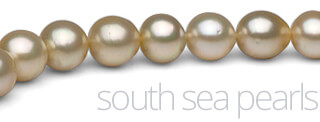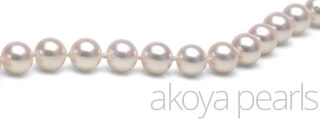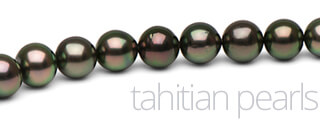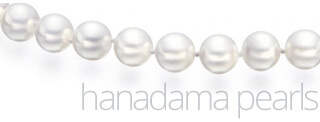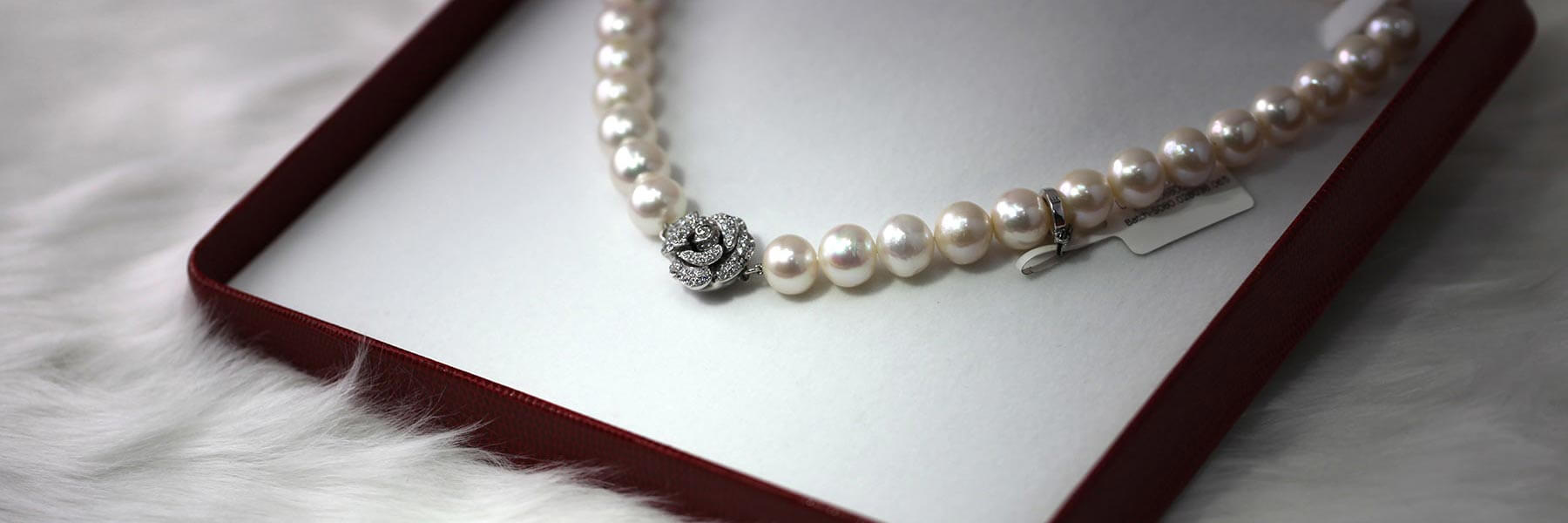Pearl Types
If you asked a group of people to describe what comes to mind when they think of a set of pearls, the majority would describe the classic round, white strand. While this may describe the traditional look of pearls, there are many more varieties and styles of pearls available. Modern pearl culturing techniques have opened the door to new colors, styles and shapes of pearls, which has brought a significant appeal back to these lovely pieces of jewelry.
A number of factors impacts the way a pearl will look, including the type of oyster, the location and even the cleanliness of the water. While we can classify pearls into different types, each pearl has its own unique style, beauty and character.
South Sea Pearls
South Sea pearls are among the largest and the most highly valued pearls. After nucleation, South Sea pearls take two to six years to fully mature and are primarily cultured in the northern waters of Australia, the Philippines and Indonesia. Their rarity and exceptional size, from 8 to 22 mm, make them highly prized. Their colors range from white and silvery blue to pale gold and soft yellow.
South Sea pearls are rare and desired not only for their size, but also for their beautiful satin luster. You don’t need a full pearl strand to appreciate the sheer beauty of these pearls; their beauty is resonated even in smaller pieces of jewelry. While few retailers are able to carry White South Sea pearls, Wixon Jewelers is proud to offer an incredible selection of pearl necklaces in various lengths, as well as pearl bracelets. For a trendy and fashion-forward look, come in to explore our selection of pearl rings and bracelets, as well.
Akoya Pearls
Considered the classic among cultured pearls, Akoya pearls are also the most popular type of pearl. These pearls are named after Japan’s Akoya oysters, which yield pearls with an abundance of luster and shine. Akoya Pearls are cultured in southwestern Japan and China and range in color from pinkish white to creamy shades and silvery blue.
This Akoya oyster typically produces smaller pearls, ranging between 2 to 10 mm, but don’t let the size fool you; these pearls are highly prized for their rich colors and stunning luster. Akoya pearls have a beautiful range of colors and are extremely popular because of their consistently round shape, making them perfect for long necklace strands and bracelets. Jewelry crafted from Akoya pearls creates a wonderful mix between formal and casual styling, allowing you to own an amazingly versatile piece of jewelry.
Tahitian Pearls
Tahitian pearls typically come from the atolls and lagoons of the South Pacific. These beauties range in color from silver and green to a dark charcoal. Most “black” Tahitian pearls are a kaleidoscope of iridescent hues that seem to visually adapt to any color they are worn with.
The legendary Tahitian pearls of the South Pacific are most frequently found over a wide area, stretching from the Cook Islands, eastward through Tahiti to the Tuamotu Archipelago and the Gambier Islands in French Polynesia. The Tahitian pearl oyster itself is quite large – sometimes over 12 inches across, weighing as much as 10 pounds. The pearls are unique because of their natural dark colors.
Although they’re known for their distinct dark range of colors, even black Tahitian pearls are not actually black. They are are instead silver, charcoal or a multitude of colors, with the dominant color being green. An often sought-after color is “peacock green” – the greenish black color of a peacock feather. Truly black pearls are among the most beautiful pearls in the world and are extremely rare. They typically have more of a drop shape than a round shape and vary in size from 8 to 18 mm.
Hanadama Pearls
Hanadama is Japanese for “Spherical Flower” and is the name that describes the finest quality Akoya pearls available on the market today. Each strand of lustrous Hanadama pearls comes with its own certification, verifying its superior quality and authenticity.
The Hanadama certification is given by the Pearl Science Laboratory of Japan in Tokyo. A strand of pearls cannot be referred to as “Hanadama” unless accompanied by this certificate. The original certificate must accompany the strand, otherwise the strand is not Hanadama.


